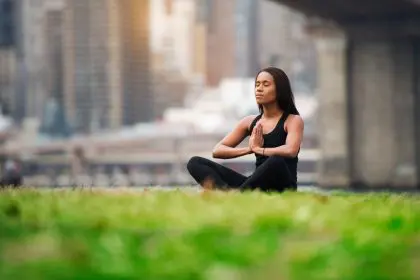Let’s face it, it’s Monday but you are already looking forward to the weekend and your account’s a little too red to take that much needed vacation. The thing is, the concept of wellness tourism has exploded into a $639 billion industry, with luxury retreats and exotic destinations dominating social media feeds. Yet the most effective rejuvenation doesn’t necessarily require international flights or premium price tags. A growing movement of wellness enthusiasts is discovering that strategic weekend escapes can deliver profound restoration at a fraction of the cost of extended retreats.
Mental health professionals increasingly recommend brief, frequent respites over less frequent extended vacations, noting that regular breaks prevent burnout more effectively than occasional longer escapes. This approach aligns perfectly with both psychological research and budgetary constraints, making weekend wellness accessible to those with limited time and financial resources.
Nature immersion retreats on a shoestring
Perhaps the most accessible form of weekend wellness involves intentional immersion in natural settings, which research consistently links to reduced stress hormones, improved mood, and enhanced cognitive function.
State parks offer underutilized opportunities for transformative experiences at minimal cost. While national parks receive abundant attention, state park systems typically feature lower entrance fees, less crowded facilities, and more available accommodations. Many offer rustic cabins at remarkably affordable rates, particularly during shoulder seasons. Pennsylvania’s state park system, for example, maintains over 170 cabin rentals starting at $38 per night, many situated in prime locations for forest bathing and wildlife observation.
For those seeking even greater accessibility, the nationwide growth of glamping options has created intermediate choices between traditional camping and resort accommodations. Platforms specializing in private land camping connect landowners with visitors seeking natural settings, often at $30-50 per night. These options frequently provide exclusive access to streams, meadows, or forest groves without the crowds of established campgrounds.
Urban dwellers without personal transportation can leverage public transit systems that connect to natural areas. Many major cities have developed programs specifically addressing this need. Chicago’s Forest Preserve system operates seasonal weekend shuttles connecting train stations to preserves, while Portland’s Outdoor Rx program coordinates group transportation to natural areas specifically focused on wellness activities.
Urban sanctuary weekends
Despite conventional wisdom suggesting that leaving the city is necessary for rejuvenation, strategic urban wellness weekends offer distinctive benefits, particularly for those seeking cultural stimulation alongside relaxation.
The growing trend of day-rate access to luxury hotel facilities has created opportunities for urban sanctuary experiences without accommodation costs. Many premium hotels now offer day passes to their spa facilities, pools, and relaxation areas for 30-40% of the cost of an overnight stay. These passes typically include amenities like eucalyptus steam rooms, meditation spaces, and quiet pools that provide complete environmental changes from daily routines.
Cultural institutions increasingly recognize their potential role in wellness tourism, developing special programming focused on contemplative experiences. Museums across the country have established early morning “quiet hours” with limited attendance, meditation spaces within galleries, and wellness-focused audio tours designed specifically for restoration rather than mere education. These programs typically carry only standard admission fees, with many offering free or discounted access during specific periods.
Urban parks and botanical gardens have similarly evolved their offerings to include dedicated wellness programming. From sunrise tai chi sessions to evening sound baths in rose gardens, these accessible green spaces provide structured restoration activities typically ranging from free to $25 per session. The combination of natural elements within urban settings creates unique opportunities for contrast and perspective shifts.
Retreat center day programs
While residential retreat centers often charge premium rates for overnight programs, many have developed day visitor options that provide access to facilities and programming at significantly reduced costs.
Buddhist monasteries and meditation centers frequently offer Saturday or Sunday visitor programs that include meals, meditation instruction, and access to grounds and facilities. These experiences typically operate on dana (donation) bases or charge nominal fees of $25-75 per day. The immersive atmosphere of these established contemplative spaces creates an experience entirely distinct from daily life, even without overnight accommodation.
Similarly, yoga retreats increasingly offer day packages that include multiple classes, facility access, and meals. These programs typically cost 20-30% of residential retreat prices while providing core wellness experiences. Many centers concentrate these offerings during shoulder seasons when residential attendance decreases, creating additional affordable access opportunities.
Wellness-focused educational institutions like Omega Institute, Kripalu, and smaller regional centers have developed hybrid models allowing local participants to attend workshops without accommodation costs. These programs offer structured learning experiences with established teachers while allowing participants to return to their own homes each evening, reducing costs by 40-60% compared to residential options.
Home-base wellness weekends
Perhaps the most budget-friendly approach involves creating structured wellness experiences while maintaining home-based accommodation, eliminating lodging costs entirely while preserving the essential elements of retreat experiences.
The digital detox home retreat has emerged as a particularly effective format. This approach involves disconnecting completely from technology, preparing simple meals in advance, and following a predetermined schedule of rest, movement, and contemplative practices. The key distinction from ordinary weekends involves creating clear boundaries, physically covering screens, establishing formal beginning and ending rituals, and potentially involving an accountability partner.
Local spas have adapted to this trend by creating “retreat pass” options that bundle multiple services across consecutive days while allowing clients to sleep at home. These packages typically offer 15-25% discounts compared to booking services individually, while providing structured wellness experiences throughout the weekend.
For those seeking more guidance, virtual wellness weekends led by established retreat leaders have emerged as a pandemic-inspired innovation that continues gaining popularity. These programs provide scheduled group sessions, individual practices, and community connection while participants remain in their homes. With costs typically ranging from $95-250 for a full weekend program, they represent significant savings compared to residential retreats while providing professional instruction and community support.
Volunteer service as rejuvenation
A particularly meaningful category of affordable wellness weekends involves structured volunteer experiences that combine purpose with natural settings and community connection.
Environmental stewardship organizations nationwide coordinate weekend habitat restoration projects that combine meaningful physical work with immersion in natural settings. These programs typically cover meals and sometimes basic accommodation in field stations or campgrounds. Participants report dual benefits: the satisfaction of contributing to ecological health alongside the rejuvenating effects of focused physical work in natural environments.
Similarly, farm sanctuaries and animal rescue organizations offer weekend volunteer programs that combine care for animals with rustic accommodation and plant-based meals. These experiences often charge only nominal registration fees of $25-50, while providing structured activities and education alongside restoration opportunities.
Wilderness trail maintenance organizations have particularly well-developed weekend programs combining backcountry experiences with purposeful work. These opportunities typically include transportation from central meeting points, tools, instruction, and sometimes meals, all at minimal or no cost to participants. The combination of physical exertion, natural beauty, and shared purpose creates distinctive rejuvenation unlike conventional leisure activities.
Strategic planning for maximum rejuvenation
Regardless of which budget-friendly weekend wellness format appeals, certain planning principles maximize rejuvenative benefits while minimizing costs and logistical stress.
Transportation strategy significantly impacts both experience quality and cost. Limiting driving time to a maximum of 2-3 hours each way preserves precious weekend hours for actual restoration rather than transit. Carpooling networks have emerged specifically for wellness destinations, particularly those near major urban centers, reducing both costs and environmental impact.
Timing considerations extend beyond avoiding peak seasons. Research on circadian rhythms suggests that beginning weekends with sunrise activities on Saturday mornings signals biological transition more effectively than Friday evening departures. Similarly, concluding rejuvenative weekends by early Sunday evening rather than late night allows for integration time before resuming work routines.
Intention setting distinguishes truly rejuvenative budget weekends from merely inexpensive getaways. Wellness professionals recommend establishing specific restorative goals and boundaries before departure, whether those involve digital disconnection, dietary shifts, movement practices, or contemplative activities. This clarity helps participants design experiences that address specific depletion patterns rather than defaulting to generic recreation.
The surge in wellness tourism reflects genuine recognition of modern life’s toll on physical and mental wellbeing. Yet the most effective restoration often comes not from distant, expensive retreats but from frequent, accessible escapes that interrupt stress cycles before they become debilitating. With strategic planning and creative approaches, weekend wellness becomes not an occasional luxury but a sustainable practice accessible regardless of budget constraints.

















